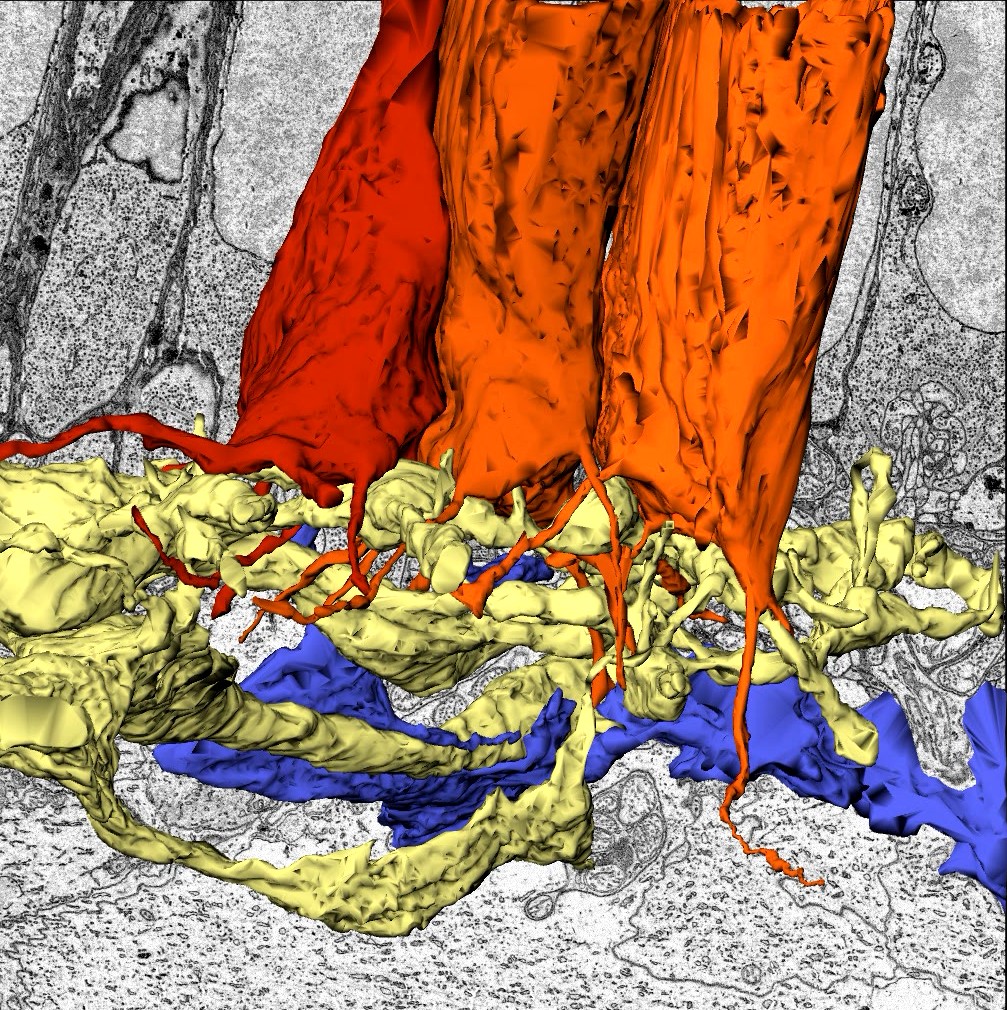Neuroscience Research
Dr. Mahima Sharma, currently advancing her research career at the Buck Institute, emphasizes how interdisciplinary collaboration is critical for extending benchwork science translatability as we discuss her recent first author eNeuro publication.
In this study, authors find an important new locus of compensatory synaptic strength changes in the early developing chick autonomic nervous system.
This image shows 3D reconstructions of Little skate photoreceptor terminals (orange) and postsynaptic partners (yellow and blue) obtained from serial block-face electron microscopy data.
Dr. Hugo Calligaro, currently in the lab of Dr. Satchidananda Panda at Salk Institute for Biological Studies, tells us about his interest in circadian rhythms and discusses the unexpected findings from his recent first author publication.
This paper investigates spatial and temporal patterns of key enzymes involved in purine synthesis.
Dr. Matthew Colonnese gives behind-the-scenes details about his eNeuro paper and cogitates on the implications of his surprising findings, in an episode of the webinar series SfN Journals: In Conversation. Here we provide a teaser for the episode available to watch on-demand.
Dr. Paul Baudin, currently completing his medical degree at the Sorbonne Paris Nord university, tells us how his Ph.D. broadened his conceptualization of neurological diseases and treatments, and emphasizes the importance of publishing negative data.
See the most-shared articles published in July and August 2023.
Confocal image of a brain section containing the somatosensory (barrel) cortex from a transgenic mouse.
Dr. Kathleen Bryant tells the story of her journey in the alcohol research field and discusses the surprising findings in her recent first author publication from Dr. Jacqueline Barker’s lab at Drexel University, where she obtained her doctoral degree.
FOLLOW US
TAGS
CATEGORIES










 RSS Feed
RSS Feed




